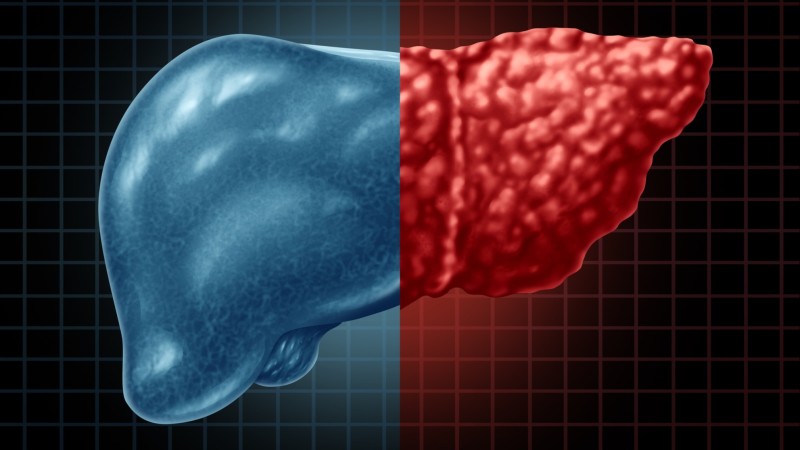Medical mimicry: How improving diagnostics can better identify markers of liver disease
MDlinx May 03, 2023
On the list of the most common causes of death across the globe, cirrhosis clocks in at number 11. Often a result of chronic liver disease (CLD), cirrhosis has been increasingly diagnosed in patients in the US—especially during the COVID-19 pandemic, according to the Journal of Hepatology.
Gao X, Lv F, He X, et al. Impact of the COVID-19 pandemic on liver disease-related mortality rates in the United States. J. Hepatol. 2023;78(1):16–27.
But despite its prevalence, CLD can be difficult to diagnose.

Why CLD gets overlooked in patients
One of the more challenging aspects of CLD is the fact that doctors can sometimes miss it in its early stages of development. According to Abby Philips, BBS, MD, DM, this is because the symptoms of CLD may seem relatively benign at first.
“Many patients only complain of a generalized change in skin color (hyperpigmentation) or specific skin changes such as acanthosis (black pigmentation over specific regions of the body, especially face, neck, and underarms) that may be seen in diabetes, low functioning thyroid, or obesity, which they already harbor,” Dr. Philips said.
These symptoms do get overlooked many times, because they tend to be nonspecific and can be seen even in various benign conditions.
And, as with any disease, early diagnosis is critical for better prognosis and improved overall health outcomes, according to the first edition of the Liver Health Annual Trends Report issued by Salix Pharmaceuticals.
Liver Health Annual Trends Report: Perspectives on the Changing Face of Chronic Liver Disease. LiverHealthNow.com. 2021.
Dr. Philips believes one way to address the issue of late diagnosis is to identify patient risk factors for cirrhosis.
“Every patient with obesity or metabolic syndrome, or alcohol use or misuse, or healthcare workers (because of their exposure to hepatitis B and C) and patients with a history of liver disease among the immediate family—all of these should ideally be advised for screening for chronic liver disease,” Dr. Philips said.
Common misconceptions about CLD
Another obstacle associated with CLD is the array of misconceptions surrounding it. To Dr. Philips, one of the biggest misconceptions is that cirrhosis can’t be reversed.
Even in stages where cirrhosis has resulted in high liver pressures (portal hypertension), studies have shown that control of the cause of cirrhosis can help reverse cirrhosis and reduce portal hypertension.
Another misconception is that cirrhosis can be healed via restrictive diets. “This is wholly untrue,” says Dr. Philips.
Similarly, there is a prevailing belief that herbal and dietary supplements are effective and safe to use. Not so, according to Dr. Philips. He cites turmeric and green tea extracts as confirmed liver toxins.
The precise nature of CLD is also subject to misunderstanding. An article published by StatNews.com clarifies that “nonalcoholic fatty liver disease (NAFLD) is the most common form of liver disease in the U.S. with a mortality rate associated with its progression to decompensated cirrhosis or hepatocellular carcinoma.”
Raising awareness for liver disease prevention and care for patients. StatNews.com. 2023.
Improving treatment of HE with new codes
The StatNews.com authors also discuss an important complication from CLD, which is hepatic encephalopathy (HE).
Up to 80% patients with cirrhosis develop HE, a disorder that can lead to a wide range of undesirable changes in behavior and personality. Fortunately, efforts are underway to improve health outcomes for patients with HE.
According to StatNews.com, physicians can more easily identify and treat patients with HE thanks to the new ICD-10-CM code, K76.82, from the CMS.
This code provides certain advantages.
For one, K76.82 is specific to HE, which will allow HCPs to accurately document the diagnosis. In addition, use of the code will create access to demographic data pertaining to the impact HE has on patients of different genders, races, ages, and geographic locations.
Finally, the new ICD-10-CM code will help to secure appropriate clinical management for patients living with HE, according to StatNews.com.
Dr. Philips agrees, stating that the new, more focused ICD-10 code “improves on the understanding that the patient has liver disease and an associated clinical complication for which a specific therapy is required.”
There are still many aspects left to understand when it comes to CLD, cirrhosis, and HE. But the specificity of the new ICD-10-CM code, as well as earlier recognition of indicative symptoms, may pave the way to better health outcomes for patients with this disease.
What this means for you
Identifying CLD in patients can be challenging, as its symptoms look similar to those of other health conditions, such as diabetes or low-functioning thyroid. In order to catch liver disease early in its development, you may implement personalized screening measures for patients at risk. For patients with HE, coding their diagnosis with the new HE-specific diagnosis code (K76.82) will help ensure that patients are appropriately managed.
-
Exclusive Write-ups & Webinars by KOLs
-
Daily Quiz by specialty
-
Paid Market Research Surveys
-
Case discussions, News & Journals' summaries